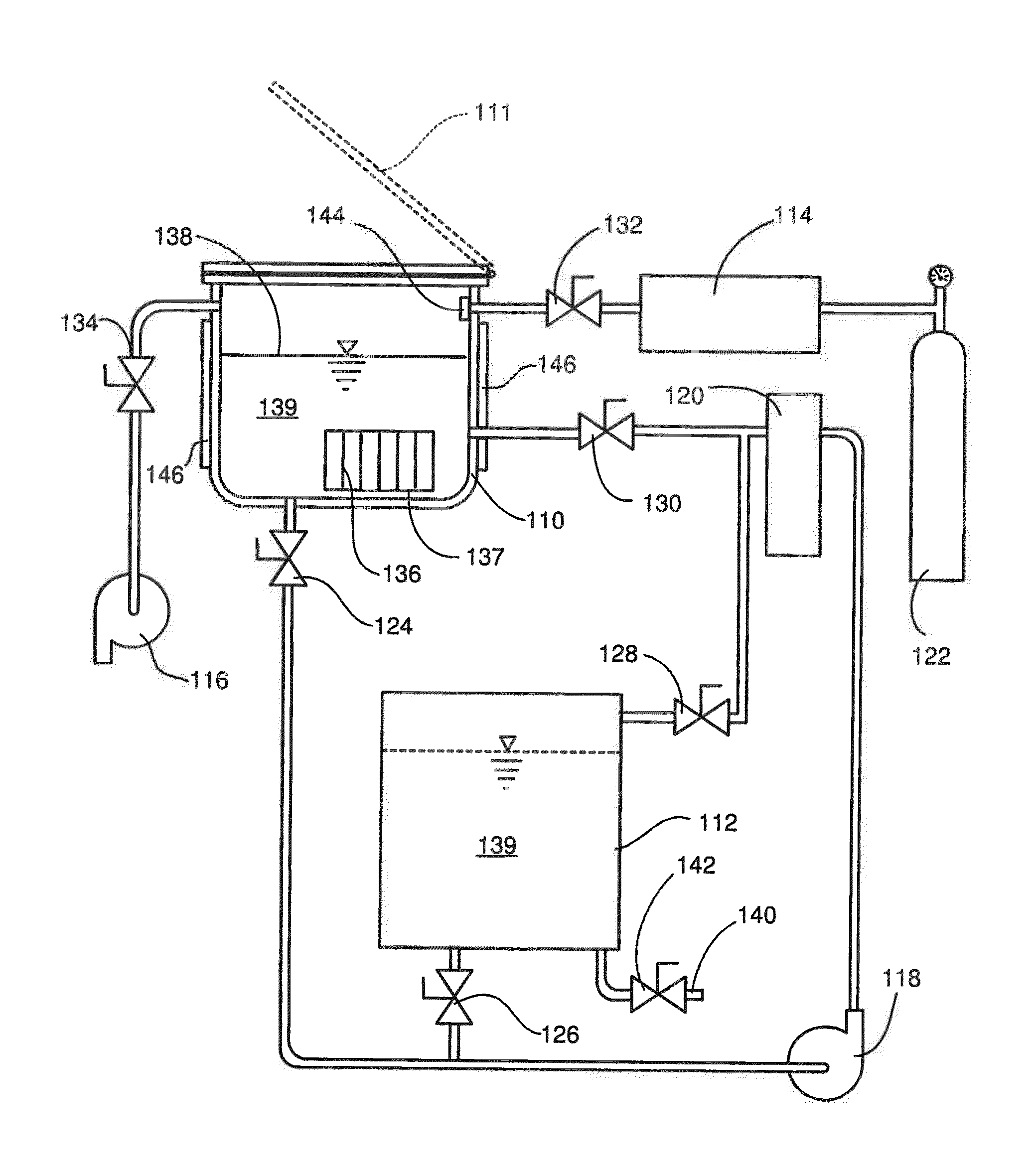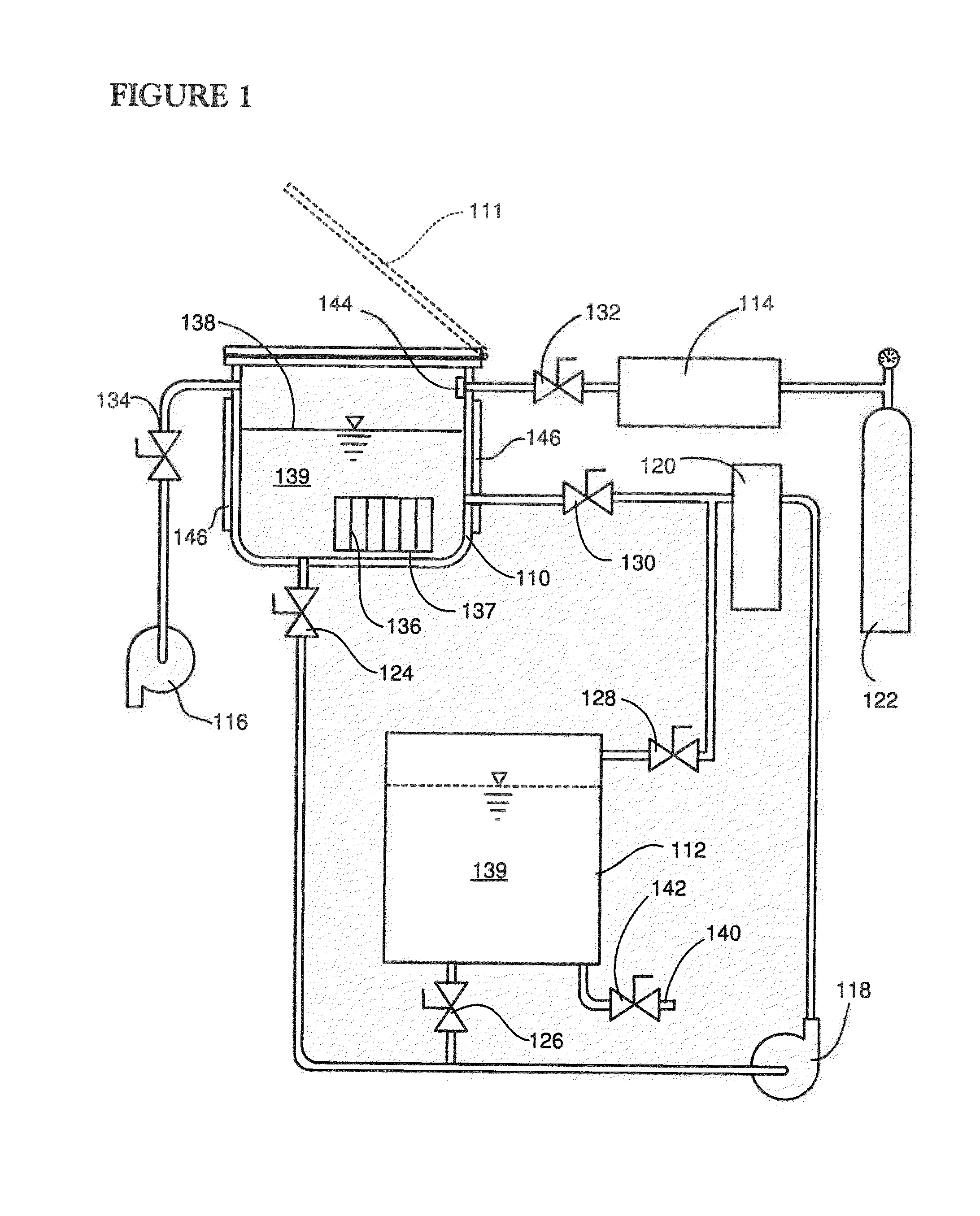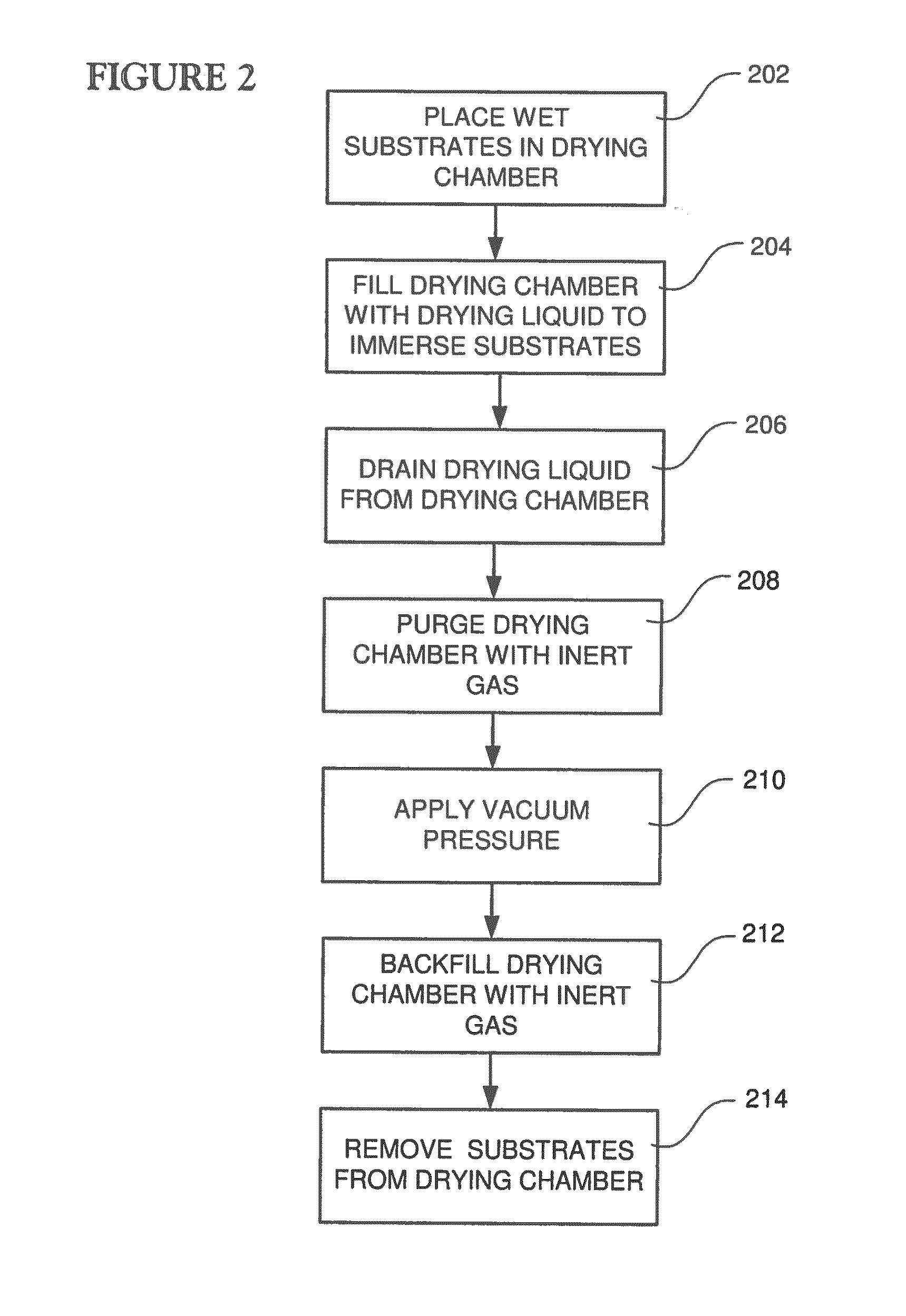System and method for drying substrates
a technology of substrates and systems, applied in the direction of basic electric elements, lighting and heating equipment, electrical equipment, etc., can solve the problems of high drying cost, long cycle time, and contamination of surface, and achieve the effect of high aspect ratio
- Summary
- Abstract
- Description
- Claims
- Application Information
AI Technical Summary
Benefits of technology
Problems solved by technology
Method used
Image
Examples
Embodiment Construction
[0018]In the following description, reference is made to the accompanying drawings that form a part thereof, and in which is shown by way of illustration specific exemplary embodiments in which the invention may be practiced. These embodiments are described in sufficient detail to enable those skilled in the art to practice the invention, and it is to be understood that modifications to the various disclosed embodiments may be made, and other embodiments may be utilized, without departing from the spirit and scope of the present invention. The following detailed description is, therefore, not to be taken in a limiting sense.
[0019]As noted above, some of the known methods for drying substrates, such as semiconductor substrates, can leave surface contaminants in the form of water spotting, and can also cause incomplete drying, potentially leading to stiction of MEMS devices on the substrate. Those of skill in the art will recognize that the term “stiction” is an informal contraction o...
PUM
 Login to View More
Login to View More Abstract
Description
Claims
Application Information
 Login to View More
Login to View More - R&D
- Intellectual Property
- Life Sciences
- Materials
- Tech Scout
- Unparalleled Data Quality
- Higher Quality Content
- 60% Fewer Hallucinations
Browse by: Latest US Patents, China's latest patents, Technical Efficacy Thesaurus, Application Domain, Technology Topic, Popular Technical Reports.
© 2025 PatSnap. All rights reserved.Legal|Privacy policy|Modern Slavery Act Transparency Statement|Sitemap|About US| Contact US: help@patsnap.com



